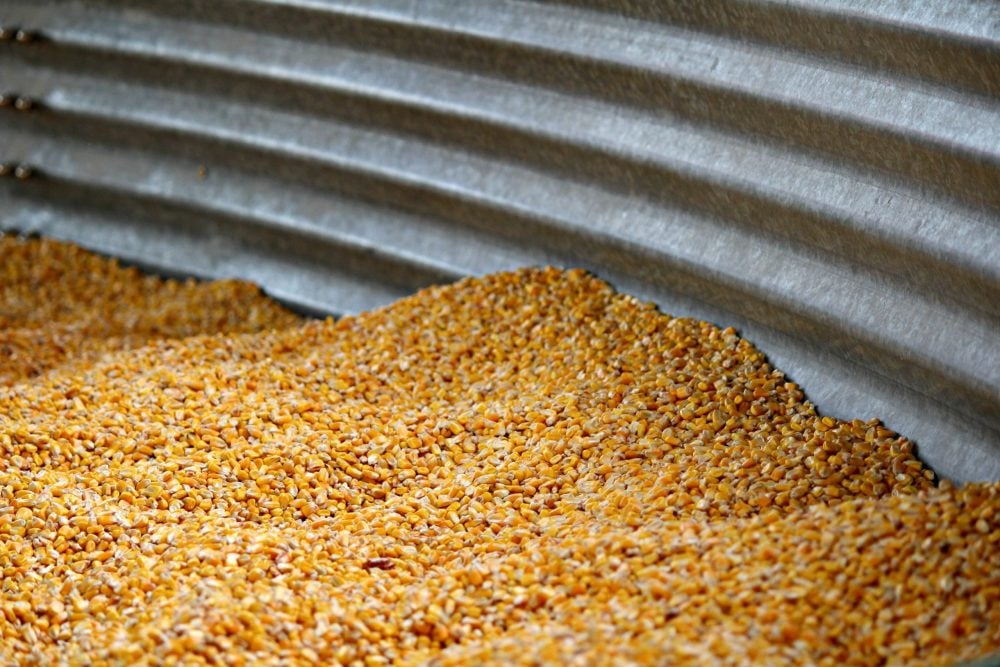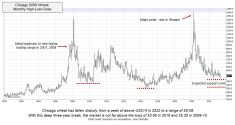Grain and oilseed markets have been digesting a calmer tone between Washington and Beijing regarding tariffs.
Quick look:
Soybeans: Widening futures spreads and strengthening Canadian dollar will likely bring down Ontario soybean basis levels.
Corn: Tight supplies mean corn prices are sensitive to weather, but funds show they expect the tightest supply to happen next spring.
Wheat: Russia has a large wheat carryout and conditions in the Ukraine and EU look good for growing wheat. There is still concern over the northern U.S. and western Canadian weather.
Read Also

Cycle swings dictate farming profitability
It can be profitable to understand where the crop markets are positioned in the context of their big-picture cycles.
On May 17, China halted the tariffs on U.S. sorghum while the Chinese vice premier was visiting Washington. Then on May 20, U.S. Treasury Secretary Mnuchin announced that the U.S. and China have reached a deal regarding a framework concerning trade between the two countries. Both sides have agreed to drop their threats and will work to address the trade imbalance within the framework.
In addition to trade developments, currency markets continue to swing export offers from major exporters. Rising bond yields have contributed to the strength in the U.S. dollar while the Canadian dollar has traded in a sideways pattern.
Soybeans
Chinese demand continues to drive the export market for soybeans. Constructive news regarding U.S. and Chinese trade relations has bolstered the soybean complex. Approximately 829,000 tonnes of old crop and 129,000 tonnes of new crop soybean sales were cancelled May 18. Brazilian offers are more competitive for the time being causing China to buy about 15 cargoes. It’s not uncommon for Brazil to dominate the export market at this time of year. However, it is important to note that the U.S. has a record amount of outstanding sales at this time of year.
It appears that exports will come in larger than the USDA estimate resulting in a lower carry-out for the 2017-18 crop year. The U.S. soybean crop was 56 per cent planted as of May 20, which compares to the last year’s progress of 50 per cent and the five-year average of 44 per cent. Favourable rains have occurred over the past week across the Midwest and the crop is off to a good start. The harvest is wrapped up in Brazil and in the final stages in Argentina.
Brazil will continue to dominate the export market until the U.S. and Canadian harvests. The futures spread between July and September is unchanged from two weeks ago trading at a four cent carry. This spread is expected to widen out to 10 to 12 cent carry over the next month which is a negative signal for the market. Ontario soybean basis levels are expected to soften. This will be partially due to the widening futures spread and partially due to a strengthening Canadian dollar. Ontario old crop soybean prices are in the range $12.50 to $12.60 with new crop prices showing a 10 cent to 20 cent premium. We want to draw attention to the weakening meal market. Export basis offers for soybean meal have been deteriorating. The July soymeal futures has moved from a $9 premium over the October contract to a $3 premium. This is a bearish signal. Look between July and October for the soymeal futures spread to eventually move into a carrying charge where the July futures trades at a discount to the October contract.
What to do: We are recommending that producers are sold out on old crop soybeans and 25 per cent to 30 per cent sold on new crop.
Corn
The feed grain complex received a bolt of energy after the Chinese lifted the tariffs on U.S. sorghum. Outside of the tariffs, there have been a number of bearish influences develop but the corn market continues to strengthen.
With timely rains in Brazil’s Safrinha region and the U.S. Midwest,, one would think the market should be under pressure but producers should realize the world corn fundamentals are rather tight. The world corn carry-out for the 2018-19 crop year is expected to drop to six-year lows near 159 million tonnes, down from the 2017-18 ending stocks of 195 million tonnes. The last time corn stocks were this snug, corn futures were trading in the range of $5 per bushel to $7 per bushel.
Stocks are now at low-enough levels so that the market cannot afford adverse growing conditions in the U.S. If trend type yields in the U.S. do not materialize, the U.S. corn carry-out will drop below the five-year average. U.S. corn demand is rather inelastic when ending stocks drop this low; a small change in supply results in a large change in price.
The fund long position in the futures market is around 400,000 contracts which is quite significant. The futures spreads reflect the commercial view of the market. If you want to know what a multinational company thinks of the market, just look at the spreads. The July to September corn futures spread is around nine cents; the September to December spread is close to 10 cents. However, notice the March 2019 to May 2019 futures spread is only 3.5 cents. This is a bullish signal in the deferred positions. Next spring, is when commercial players expect that corn will be hard to buy. In the Ontario cash market, prices for May delivery are around $4.80 and for October, prices are only eight cents to 10 cents higher. This narrow spread between old and new crop is telling producers not to store corn into new crop positions. Basis levels are weaker for delivery off the combine.
What to do: Given the current environment and market structure, producers probably want to finish old crop sales but save a portion in case of a summer rally. We mentioned in the previous issue that producers may sell a small portion of new crop but don’t be overly aggressive. The market is telling us that the tighter supply situation will occur next spring. The corn market is going to be extremely sensitive to weather forecasts during the latter half of June and July. This could also provide a good selling opportunity for new crop positions. There could easily be a $1/bushel to $1.50/bushel rally in the corn market.
Wheat
The wheat market continues to focus on Northern Hemisphere crop conditions. Australia is in the peripheral sights but will only become a major concern if the drier conditions continue through August.
The 2017-18 Russian wheat carry-out is expected to be a record of 11 million tonnes. These stocks are farther inland making it more difficult to move into export position. The Volga district and the Southern Russian district have become drier over the past week. More importantly, the 10- to 15-day forecasts are calling for above-normal temperatures with average to below-average precipitation for most of the winter wheat region. The critical period is during June so there is potential for yield deterioration in the Russian winter wheat crop.
Western Canada received 10 mm of precipitation last week with small pockets of Manitoba and Alberta receiving up to 25 mm. There is no major rain event in the 10-day forecast and temperatures are expected to be above average. The U.S. northern plains are in a similar situation. It appears that last year’s drought in North Dakota has spread north into Western Canada. The U.S. hard red winter wheat crop is about one month behind normal development. Above-normal temperatures are expected over the next seven to 10 days while the crop moves through the heading and filling stage.
In conclusion, the next 30-day window will be very important for the Northern Hemisphere winter wheat crops. The spring wheat regions of Canada and the U.S. are also rather dry and need timely rains. The wheat futures markets are expected to incorporate a risk premium due to the uncertainty in production. Keep in mind the window for this risk premium to develop is short. The U.S. hard red winter and Russian winter wheat harvest will begin in late June. The U.S. hard red winter wheat farmer sells half of the crop in the summer so harvest pressure is right around the corner. Once harvest begins, the market will come under pressure.
What to do: Farmers with hard red winter, soft red winter wheat, or soft white winter, probably want to sell before this harvest pressure starts. Farmers with hard red spring wheat should wait for a weather rally in the summer and then sell remaining old crop stocks. For new crop, wheat is probably the crop you want to store and avoid selling during the summer months.













